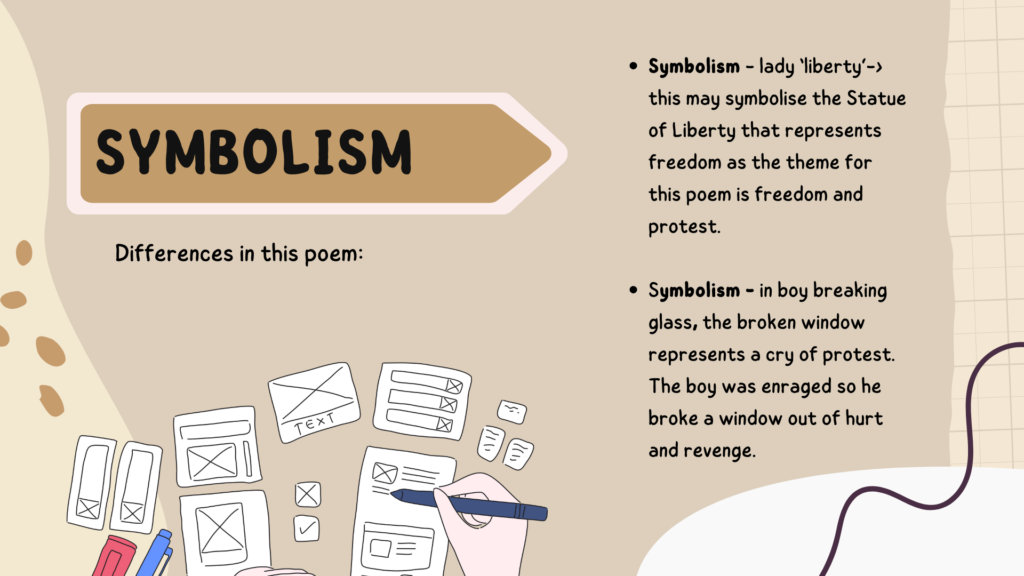Comparing Themes Through Poetry
Recently, MYP 5 finished their unit about the power of protest, specifically, protest explored through poetry (find out more about the unit from my previous post). At the end of what I deemed a very insightful unit, I challenged students to prepare and present a comparative analysis of two poems to explore how two authors from different periods can approach the same theme in their respective works. Below, you can find an outline of the assignment they undertook and an example of one of the presentations.
Objective
The objective of the assignment was for students to demonstrate their comprehension of literary devices and themes. They accomplished this by comparing and contrasting two poems that share the themes of protest, empowerment, and resistance or employ similar literary devices.
Presentation Requirements
Students selected two poems from different poets or periods that fit the specified themes. They then created a presentation that compared and contrasted the use of literary devices and explored common themes within the chosen poems. It’s important to note that the presentation was meant to be brief. Instead of relying on the presentation, it was only to be used as a visual aid for their classmates.
Project Components
- Poem Selection: Students chose poems that shared the common theme of Empowerment, resistance, and Protest (all available here). Historical context, poet backgrounds, and literary styles were factors to consider.
- Literary Device Analysis: Students identified and analyzed various literary devices used in each poem, such as imagery, metaphor, symbolism, etc.
- Theme Exploration: Exploring the themes present in each poem considering how literary devices contributed to their development.
- Comparison and Contrast: Students compared and contrasted the use of literary devices and themes in the two poems. The focused on highlighting similarities and differences in approach, style, and message.
- Presentation Preparation: A well-organized presentation with a clear introduction, body, and conclusion. The students used the presentation as a visual aid to engage the audience.
Presentation Guidelines
Students began with an introduction providing background information on the poets and the selected poems. They then identified and analyzed literary devices, explored themes, used specific examples from the poems, and concluded by summarizing findings and discussing the significance of their analysis.
Assessment Criteria
Presentations were assessed based on content depth, organizational clarity, delivery engagement, and overall impact in conveying analysis and insights.
As parents, your support and encouragement in discussing literature at home can greatly enhance your child’s learning experience. Encourage them to share their insights and findings from this assignment. It’s a fantastic opportunity for them to develop critical thinking skills and a deeper appreciation for literature. Enjoy an excerpt from one of the presentations prepared by one of our students below. Remember that its main purpose was to serve as only a visual aid.








